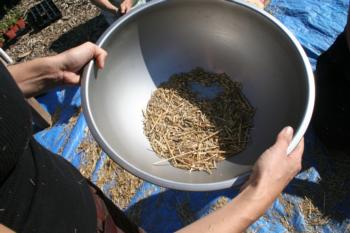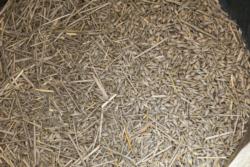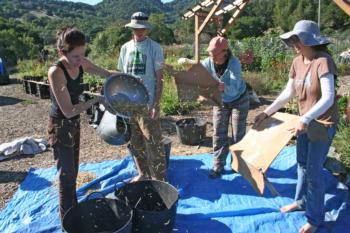Emmer wheat (Triticum dicoccum), also known as farro especially in Italy, is a low yielding, awned wheat. It was one of the first crops domesticated in the Near East. It was widely cultivated in the ancient world, but is now a relict crop in mountainous regions of Europe and Asia.
Like einkorn and spelt wheats, emmer is a hulled wheat. In other words, it has strong glumes (husks) that enclose the grains, and a semi-brittle rachis. On threshing, a hulled wheat spike breaks up into spikelets. These require milling or pounding to release the grains from the glumes.

Emmer was a wholesome daily staple of the ancient Egyptians, and has been grown for millennia in the Middle East and North Africa. Originating 12,000 to 9,000 years ago, emmer gave rise to all durum wheat. Its younger cousin by 2,000 years, spelt, is a soft wheat, often masquerading as true farro. After Julius Caesar’s invasion of Egypt in 30 B.C., farro found a home in Italy, the only country today where it is cultivated on a large scale. The nutritious grain became a staple at every level of Roman society, sustaining the Roman Legions and even giving rise to the Italian word for flour: farina. Delicious and high in protein, Emmer nonetheless saw its place at the table usurped in modern times by higher-yield, easily-harvested wheat, such as those found in breads, pastas, and cereals today.
Hand winnowing of ancient Emmer wheat grown in Two Rock. Indian Valley Organic Farm & Garden students and Conservation Corps North Bay members used cardboard fans to create wind.






